|
|
|---|
The scapular anchor:- start position
- Stand relaxed and point with your arm at a spot on
the floor about one meter in front of your feet.
- While relaxing your right shoulder, let your arm elongate toward the spot on the floor.
- Reach your left hand up behind your back and touch the lower left corner of your right shoulder blade. It should be easy to find because it will be sticking out from your back (this is called scapular winging).
The scapular anchor:- action
- While continuing to point at the spot on the floor, attempt to bring the lower left corner of your shoulder blade back
close to your back. You will have to work hard to do this.
- Point at a spot on the floor 45 degrees to the right of your feet, and hold the lower left point of your shoulder
blade close to your back. Use the least amount of muscle tension that will do this.
- Bring your right arm back down to your side, & hold the lower left point of your shoulder
blade close to your back. Use the least amount of muscle tension that will do this.
This should take very little effort.
- As a final check, use your left hand to check that your right Latissimus dorsi is relaxed.
(Exercises alone will not fix or prevent scapular winging &
round shoulders - you need to become "posturally aware" as well. In severe cases of scapular winging, there may be a surgically treatable
nerve deficit - see ref (2) - Scroll right>>>>....)
|
|
The scapular anchor in pictures:- start position and action
|
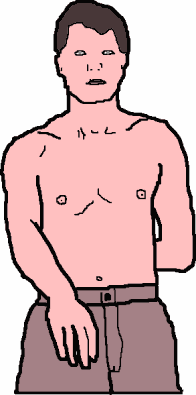
|
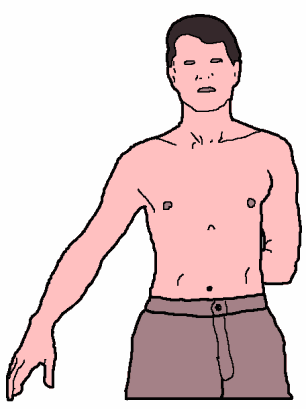
|

|
|
Pictures: Top Row - Scapular winging - the corner of the scapular
has lifted away from the underlying ribs. Bottomn row - Scapular winging corrected.
|
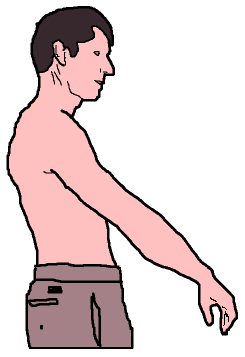
|
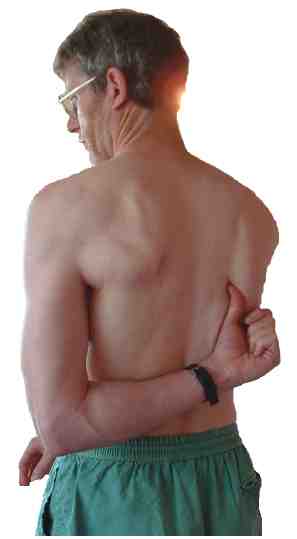
|
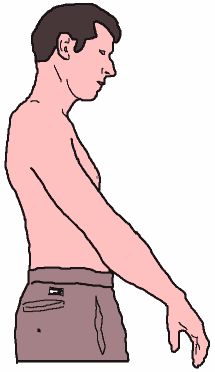
|
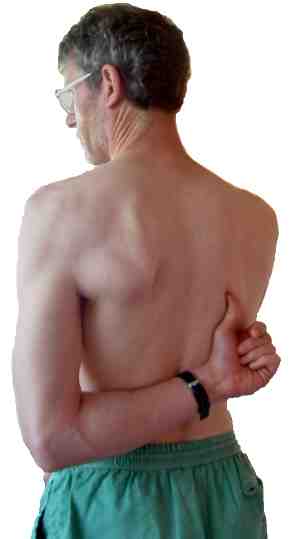
|
|
Comment: management of scapular winging: This exercise works
the "Scapular Anchors": The Lower Trapezius & the Serratus anterior.
These muscles are often weak, causing the shoulder blade to be poorly positioned.
Poor shoulder blade positioning contributes to muscle strains & rotator cuff injuries(1).
Use your scapular anchors throughout the day! - Your shoulder muscles will perform better, & you
will save yourself a lot of pain!.
|
Pictures: Left - The lower trapezius.
Right - The Serratus anterior (viewed from the front).
|

|
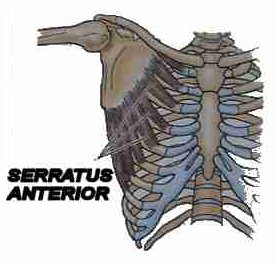
|
| Pictures: Left - The Latissimus dorsi. Right - How
to locate the Latissimus dorsi. |
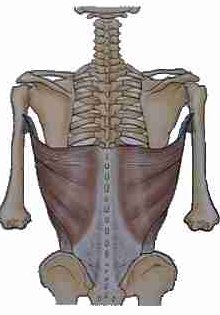
|
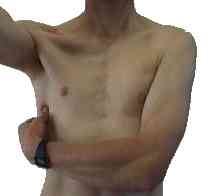
|
Reference
1. Shirley A Sahrmann: Diagnosis of and Treatment of Movement Impairment Syndromes
Publ. Mosby 2002
2. Steven Fromm:
Treatment, Management, Pictures, Scapular Winging
http://freespace.virgin.net/steven.fromm/
-
© Bruce Thomson, EasyVigour Project scroll up^^^^.....
|










